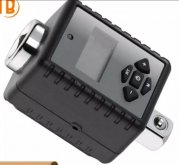Frank in Thailand
making mistakes so you don't have to...
I'm trying to find out how much torque the terminal should get to have the bus-bar compressed tightly enough to ensure good contact.
Yes, clean and flat materials
The white paper say:
"The torsion should be less than 8Nm when used"
And
"The internal screw with size M4 is used in the pole. "
I don't have M4.
Those who have followed my latest adventure know I also have less 6mm
When known what torque should be absolutely sufficient, I will test each threaded rod with 1Nm extra.
Those that fail (an already have failed) will be re-tapped with M8.
How much torque for M6.
And how much must it be for M8 to obtain the same compression force as M6 did with that torque?
Google did not help me today, probably more due my fuzzy mind then Google
Yes, clean and flat materials
The white paper say:
"The torsion should be less than 8Nm when used"
And
"The internal screw with size M4 is used in the pole. "
I don't have M4.
Those who have followed my latest adventure know I also have less 6mm
When known what torque should be absolutely sufficient, I will test each threaded rod with 1Nm extra.
Those that fail (an already have failed) will be re-tapped with M8.
How much torque for M6.
And how much must it be for M8 to obtain the same compression force as M6 did with that torque?
Google did not help me today, probably more due my fuzzy mind then Google



